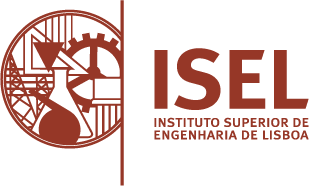Applications for a-Si:H TFTs: Modelling and Simulation
Abstract
Hydrogenated amorphous silicon thin film transistors have been used as switching elements in liquid crystal displays and large area matrix addressed sensor arrays. Later, these devices have also been used as analogue active elements in organic light emitting diode displays. However, this technology suffers from bias induced meta-stability. This issue introduces both threshold voltage and subthreshold slope shifts over time when gate bias is applied. Such instabilities jeopardize long term performance of circuits that rely on these components. Nevertheless, hydrogenated amorphous silicon thin film transistors present an exponential transfer characteristic when operating on subthreshold region and their typical power consumption is under 1 µW. This low power characteristic makes these devices ideally suited for low power electronic design.
This work demonstrates, through transient analysis of a well-established simulation model for hydrogenated amorphous silicon, the viability of thin film transistors technology to perform both analogue and digital functions. Hence, these structures may be used in both application fields. To this end, two different sets of analyses have been conducted with hydrogenated amorphous silicon based thin film transistors. The first set considers a driving circuit for an active matrix of organic light emitting diodes, biased in a way to minimize the “memory effect” (increasing shift on threshold voltage) due to long term operation. The second set of analyses were conducted upon the implementation of complementary output universal gates, namely NOR/OR and XNOR/XOR elements.
Keywords
Full Text:
PDFReferences
D. Kahng, “A historical perspective on the development of MOS transistors and related devices,” IEEE Trans. Electron Devices, vol. 23, no. 7, pp. 655–657, Jul. 1976, doi: 10.1109/T-ED.1976.18468.
P. G. Le Comber, W. E. Spear, and A. Ghaith, “Amorphous-silicon field-effect device and possible application,” Electron. Lett., vol. 15, no. 6, pp. 179–181, 1979, doi: 10.1049/el:19790126.
A. Sharma, C. Madhu, and J. Singh, “Performance Evaluation of Thin Film Transistors: History, Technology Development and Comparison: A Review,” Int. J. Comput. Appl., vol. 89, no. 15, pp. 36–40, 2014, doi: 10.5120/15710-4603.
M. R. Marks, Z. Hassan, and K. Y. Cheong, “Ultrathin Wafer Pre-Assembly and Assembly Process Technologies: A Review,” Crit. Rev. Solid State Mater. Sci., vol. 40, no. 5, pp. 251–290, 2015, doi: 10.1080/10408436.2014.992585.
T. D. Takayasu Sakurai, Akira Matsuzawa, Fully-Depleted SOI CMOS Circuits and Technology for Ultralow-Power Applications - Takayasu Sakurai, Akira Matsuzawa, Takakuni Douseki - Google Books. .
R. Street, Technology and Applications of Amorphous Silicon, vol. 37. Berlin, Heidelberg: Springer Berlin Heidelberg, 2000.
“AIM SPICE.” http://www.aimspice.com/ (accessed Jan. 24, 2020).
“AIM-Spice Reference Manual.” http://homepages.rpi.edu/~sawyes/AIMSPICE_TutorialManual.pdf (accessed Jan. 24, 2020).
H. Aoki, “Dynamic characterization of a-Si TFT-LCD pixels,” IEEE Trans. Electron Devices, vol. 43, no. 1, pp. 31–39, 1996, doi: 10.1109/16.477590.
L. Zhu, “Modeling of a-Si : H TFT I-V Characteristics in the Forward Subthreshold Operation,” Current, 2005.
D. Zou, M. Yahiro, and T. Tsutsui, “Improvement of current-voltage characteristics in organic light emitting diodes by application of reversed-bias voltage,” Japanese J. Appl. Physics, Part 2 Lett., vol. 37, no. 11 SUPPL. B, pp. 9–12, 1998, doi: 10.1143/jjap.37.l1406.
S. Yujuan, Z. Yi, C. Xinfa, and L. Shiyong, “A Simple and Effective ac Pixel Driving Circuit For Active Matrix OLED,” IEEE Trans. Electron Devices, vol. 50, no. 4, pp. 1137–1140, 2003.
“LT Spice XVII.” http://ltwiki.org/LTspiceHelpXVII/LTspiceHelp/html/LT_spice_overview.htm (accessed Jan. 24, 2020).
A. Agarwal and J. H. Lang, Foundations of Analog and Digital Electronic Circuits. Elsevier Inc., 2005.
S. M. Venugopal, “Flexible active matrix displays and integrated amorphous silicon source drivers,” 2007.
DOI: http://dx.doi.org/10.34629/ipl.isel.i-ETC.90
Refbacks
- There are currently no refbacks.
Copyright (c) 2020 Paulo Lourenço, Alessandro Fantoni, Luis Fernandes, João Costa, Manuela Vieira

This work is licensed under a Creative Commons Attribution-NonCommercial 4.0 International License.


